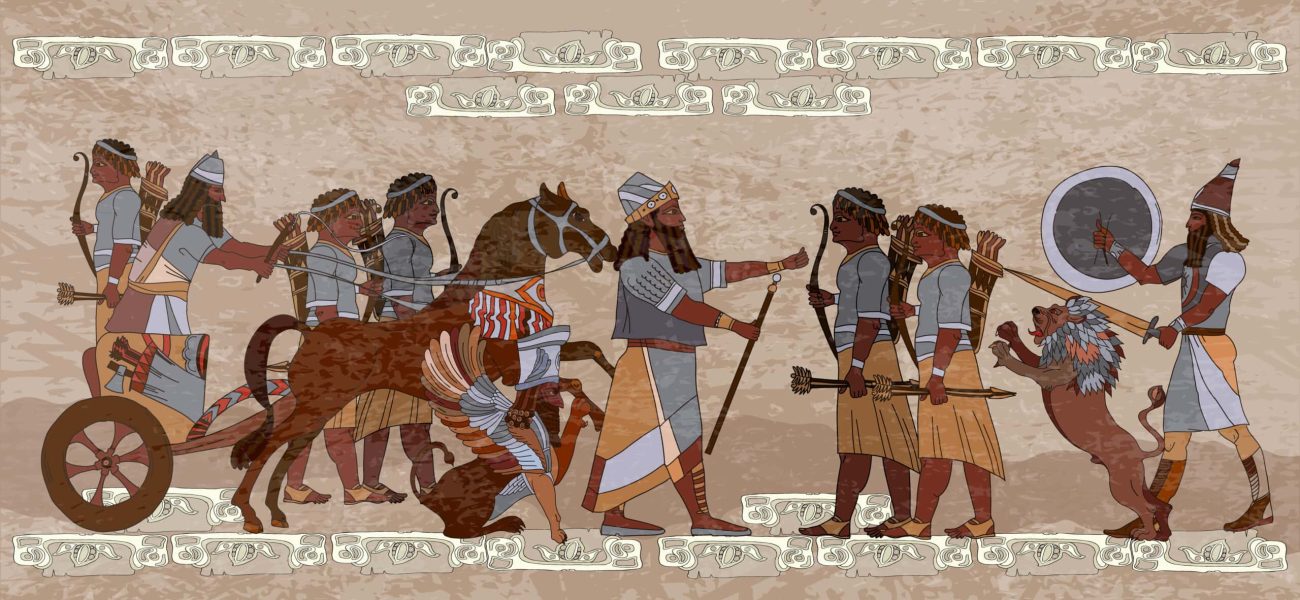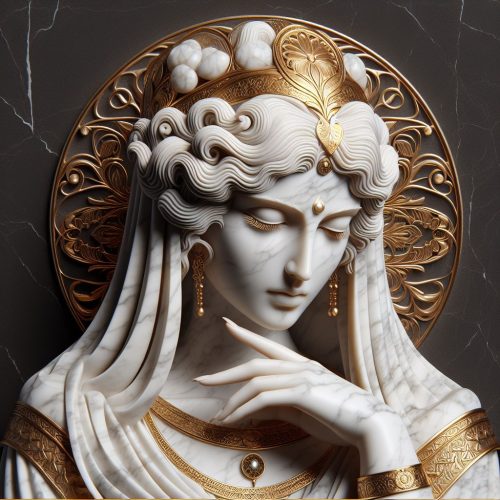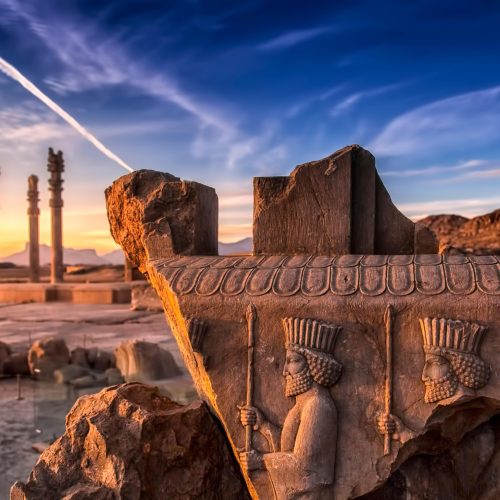In the annals of human history, few tales are as enduring and poignant as that of the Assyrian people. Their story, woven into the very fabric of Iran’s rich tapestry, is one of resilience, faith, and cultural tenacity. As we embark upon this scholarly odyssey, let us cast our gaze back through the mists of time, to an era when mighty empires rose and fell, and the echoes of ancient languages reverberated across the fertile crescent.
The Assyrians, descendants of one of the world’s oldest civilizations, have long called the lands of Iran their home. Their presence in this realm predates the very notion of Iran as a modern nation-state, stretching back to time immemorial. To understand the Assyrians of Iran is to comprehend a living bridge between the present and a past so distant it borders on the mythical.
History: A Tapestry of Triumphs and Tribulations
The story of the Assyrians in Iran is not merely a footnote in the grand narrative of Persian history; it is a saga that spans millennia, replete with moments of glory and periods of profound hardship. To truly grasp the significance of their presence, we must first journey back to the twilight of the Neo-Assyrian Empire, that great colossus of the ancient Near East.
In the 7th century BCE, as the last Assyrian king, Ashur-uballit II, watched his empire crumble before the combined might of the Medes and Babylonians, little did he know that the legacy of his people would endure far beyond the fall of Nineveh. As the great cities of Assyria fell to ruin, many of its people sought refuge in the mountainous regions to the east, in lands that would one day become part of Iran.
These early Assyrian refugees, carrying with them the memories of their once-great civilization, found themselves in a land of stark beauty and harsh realities. The Zagros Mountains, with their towering peaks and hidden valleys, became both sanctuary and challenge. Here, amidst the rugged terrain, the Assyrians began the long process of rebuilding their lives, preserving their culture, and adapting to their new circumstances.
As the centuries unfurled like great scrolls of parchment, the Assyrians witnessed the rise and fall of empires that swept across their adopted homeland. The Achaemenids, under the great Cyrus, brought a period of relative peace and prosperity. The policies of this “King of Kings” allowed the Assyrians, along with other minority groups, to maintain their distinct identity within the vast Persian Empire.
The arrival of Alexander the Great and the subsequent Seleucid period brought Hellenistic influences to the region, touching even the remote Assyrian communities. Yet, through it all, the Assyrians clung tenaciously to their language, customs, and faith.
The Parthian era saw the Assyrians navigating a complex political landscape, often caught between the machinations of Rome and Persia. It was during this time that Christianity began to take root among the Assyrian population, a development that would profoundly shape their identity in the centuries to come.
The Sassanid period brought both opportunity and challenge for the Assyrian communities. While some rose to prominence in the imperial court, others faced persecution for their Christian faith. The reign of Khosrow I Anushirvan, in particular, saw a flowering of Assyrian scholarship, with the famous School of Nisibis becoming a beacon of learning in the ancient world.
The Arab conquest of Persia in the 7th century CE marked another turning point in Assyrian history. As dhimmis under Islamic rule, the Assyrians faced new restrictions but also found ways to preserve their identity. Many became renowned for their skills in medicine, philosophy, and the sciences, contributing significantly to the Islamic Golden Age.
The Mongol invasions of the 13th century brought devastation to much of Iran, and the Assyrian communities were not spared. Yet, even in the face of such calamity, they endured. In the aftermath, some Assyrians found favor with the Ilkhanate rulers, serving as diplomats and administrators.
The Safavid era witnessed a resurgence of Persian national identity, which at times put pressure on minority communities. However, the Assyrians’ skills as merchants and craftsmen ensured their continued importance to the economic life of the empire.
As we approach the modern era, the story of the Assyrians in Iran becomes ever more complex. The constitutional revolution of 1906 brought hopes of greater equality, but the tumultuous years that followed often left minority communities vulnerable. The two World Wars had a profound impact on the Assyrians, with many fleeing violence and persecution.
In the crucible of the 20th century, the Assyrians of Iran faced numerous challenges. The modernization policies of Reza Shah Pahlavi, while bringing some benefits, also put pressure on traditional ways of life. The Islamic Revolution of 1979 ushered in a new era, with the Assyrians recognized as a religious minority but facing new restrictions.
Throughout this long and winding history, the Assyrians of Iran have demonstrated an remarkable ability to adapt and persevere. Their story is one of cultural resilience, of a people who have managed to maintain their distinct identity through millennia of change and challenge. It is a testament to the enduring power of community, faith, and tradition.
Religious Communities: Keepers of Ancient Flames
The religious life of the Assyrians in Iran is a tapestry as rich and varied as their history. At its core lies Christianity, which has been the bedrock of Assyrian identity since the early centuries of the Common Era. Yet, to speak of Assyrian Christianity is to invoke a tradition far removed from the Western conception of the faith.
The Church of the East, often referred to as the Nestorian Church, has been the primary spiritual home for many Assyrians in Iran. Its origins can be traced back to the apostolic age, with tradition holding that St. Thomas, St. Thaddeus, and St. Bartholomew brought the Gospel to the lands of ancient Assyria and Persia. This church, with its distinct theology and liturgical practices, became a defining feature of Assyrian culture.
The liturgical language of the Church of the East, Syriac, is a dialect of Aramaic – the language spoken by Jesus himself. In the hidden valleys and remote villages of Iran, one can still hear the cadences of this ancient tongue, a living link to the earliest days of Christianity. The preservation of this language, in both its spoken and written forms, has been a point of pride for the Assyrian community.
Within the Church of the East, a rich tradition of monasticism flourished. In the shadow of the Zagros Mountains, monasteries became centers of learning and spirituality. The famous School of Nisibis, though located in what is now modern-day Turkey, had a profound influence on Assyrian intellectual life in Iran. These monastic institutions were not merely retreats from the world, but vibrant centers of scholarship, where ancient texts were preserved, and new works of theology, philosophy, and science were produced.
The schisms that rent the wider Christian world did not leave the Assyrian community untouched. In the 16th century, a significant portion of the Assyrian population entered into communion with the Roman Catholic Church, giving rise to the Chaldean Catholic Church. This split, while painful, added another layer of complexity to the religious landscape of the Assyrians in Iran.
The arrival of Western missionaries in the 19th century brought further changes. Presbyterian and Anglican missions established schools and hospitals, which, while providing valuable services, also led to the creation of new denominational identities within the Assyrian community.
Despite these divisions, there remains a strong sense of shared cultural identity among the various Assyrian Christian groups in Iran. The ancient rites, the sonorous chants in Syriac, the veneration of saints long forgotten by the Western church – all these serve as powerful reminders of a common heritage.
Yet, it would be remiss to speak of Assyrian religious life in Iran without acknowledging the profound influence of the broader Iranian cultural context. Centuries of coexistence with Zoroastrianism, Islam, and other faith traditions have left their mark. In the customs and folklore of Assyrian communities, one can often discern echoes of pre-Christian beliefs and practices, seamlessly integrated into their Christian worldview.
The religious calendar of the Assyrians in Iran is a testament to this cultural synthesis. While the great feasts of the Christian year – Christmas, Easter, and Pentecost – are observed with all due solemnity, there are also celebrations that reflect a distinctly Iranian heritage. The observance of Nusardil, a water festival with possible roots in ancient Mesopotamian traditions, is one such example.
In the face of modernization and global influences, the religious communities of the Assyrians in Iran have shown remarkable resilience. Ancient liturgies are still chanted, age-old fasts observed, and traditional rites of passage marked with ceremonies that would be recognizable to their ancestors from centuries past.
Yet, these communities are not mere relics of a bygone era. They have adapted to changing times, engaging with the challenges of the modern world while striving to maintain their unique spiritual heritage. The use of modern media to preserve and transmit religious knowledge, the education of young people in both their faith traditions and contemporary sciences, and the ongoing dialogue with other religious communities in Iran – all these speak to a living, evolving faith.
The religious life of the Assyrians in Iran, then, is a microcosm of their broader historical experience. It is a story of preservation and adaptation, of holding fast to ancient truths while navigating the complexities of the present. In the churches and homes of Assyrian communities across Iran, one can still hear the echoes of a faith that has endured through empires and revolutions, a living testament to the enduring power of belief.
Distribution: A People Scattered Yet United
The distribution of Assyrian communities across the vast expanse of Iran tells a story of adaptation, resilience, and the inexorable forces of history. Like precious stones scattered across a tapestry of silk, Assyrian settlements dot the Iranian landscape, each a repository of ancient heritage and living culture.
Historically, the heartland of Assyrian presence in Iran has been the northwestern province of West Azerbaijan. Here, in the fertile plains around Lake Urmia, Assyrian villages have stood for centuries. The city of Urmia itself, known in Syriac as Urmia, has long been a center of Assyrian culture and learning. It was here that the first Assyrian printing press in Iran was established in the 19th century, giving birth to a flourishing of Assyrian literature and journalism.
The Salmas Plain, to the north of Lake Urmia, is another area of significant Assyrian settlement. Villages such as Khosrawa, Patarghan, and Ula have been home to Assyrian communities for generations. These settlements, nestled among rolling hills and surrounded by orchards, have preserved traditions that hearken back to ancient Mesopotamia.
Yet, the story of Assyrian distribution in Iran is not confined to the northwest. The vicissitudes of history have seen Assyrian communities established in various parts of the country. In Tehran, the bustling capital, a significant Assyrian population has long been present. Here, in the heart of modern Iran, Assyrian churches stand as testament to the community’s enduring presence, their domes and crosses a familiar sight in certain neighborhoods.
The city of Isfahan, once the glittering capital of the Safavid Empire, has also been home to an Assyrian community for centuries. The famous Vank Cathedral, with its stunning frescoes blending Persian and Christian artistic traditions, stands as a monument to the long history of Assyrian presence in this city of ethereal beauty.
In the western provinces of Kermanshah and Ilam, bordering Iraq, one can find Assyrian communities with deep roots. These areas, part of the ancient Assyrian heartland, have maintained a continuous Assyrian presence despite centuries of political upheaval and demographic change.
The pattern of Assyrian settlement in Iran has been shaped by myriad factors – the pull of economic opportunity, the push of persecution, the ebb and flow of political favor. The 20th century, in particular, saw significant shifts in the Assyrian population distribution. The tragedies of World War I led many Assyrians to seek refuge in Iran, altering the demographic landscape. Conversely, the latter half of the century saw a trend of urbanization and emigration, with many Assyrians moving from rural villages to cities, both within Iran and abroad.
Despite these shifts, the connection to ancestral lands remains strong. Many Assyrians who have moved to Tehran or emigrated to the West maintain links with their villages of origin. Summer visits to these rural communities are a common practice, allowing urban Assyrians to reconnect with their roots and maintaining the vitality of these historic settlements.
The Assyrian presence in Iran, while numerically small, is geographically diverse. From the shores of the Caspian Sea to the Persian Gulf, from the western borders to the central deserts, Assyrian communities have made their homes. This dispersal, while challenging for community cohesion, has also contributed to the rich tapestry of Iranian cultural diversity.
In each of these settlements, whether a tiny village in the mountains of Kurdistan or a bustling Assyrian neighborhood in Tehran, the rhythms of Assyrian life continue. The ancient Syriac language is heard in homes and churches, traditional foods grace tables during festivals, and age-old customs mark the passages of life.
Yet, it would be a mistake to view these communities as isolated enclaves. The Assyrians of Iran are very much part of the broader Iranian society, participating in the national economy, culture, and politics. Their distribution across the country has led to a unique synthesis of Assyrian and Iranian cultures, creating a distinctive Assyrian-Iranian identity.
The story of Assyrian distribution in Iran is, in many ways, a microcosm of the larger Assyrian diaspora. It speaks to the resilience of a people who have maintained their identity across vast distances and through countless challenges. From the ancient heartlands around Urmia to the modern apartments of Tehran, the Assyrian presence in Iran continues to evolve, adapting to new realities while holding fast to ancient traditions.
As we survey the distribution of Assyrians across Iran, we are reminded of the words of the ancient Assyrian king Ashurbanipal: “I gathered all the people and settled them in their places.” Though spoken millennia ago, these words resonate with the experience of the Assyrians in Iran – a people gathered from the four winds, settled in diverse places, yet united by a common heritage and an enduring faith.
Churches: Sanctuaries of Faith and Culture
The churches of the Assyrians in Iran stand as silent sentinels of history, their weathered stones and ancient inscriptions bearing witness to centuries of faith, struggle, and perseverance. These edifices, scattered across the Iranian landscape, are far more than mere buildings of worship; they are the very heart of Assyrian cultural and spiritual life, repositories of tradition, and enduring symbols of a people’s identity.
Among the most venerable of these structures is the Church of Saint Mary in Urmia. Its foundations, laid in the 5th century, speak to the antiquity of Christian presence in this region. The church has been rebuilt and renovated many times over the centuries, each iteration a testament to the enduring faith of the Assyrian community. Within its walls, the lilting cadences of the Syriac liturgy have echoed for over fifteen hundred years, a living link to the earliest days of Christianity.
In the village of Mart Maryam, not far from Urmia, stands another ancient house of worship. This church, dedicated to the Virgin Mary, is renowned for its exquisite frescoes, which blend Byzantine artistic traditions with distinctly Persian motifs. Here, on feast days, one can still witness processions that would be familiar to the faithful of a millennium ago, the air heavy with the scent of incense and the sound of ancient hymns.
The Cathedral of Mart Maryam in Tabriz, while of more recent construction, is no less significant in the spiritual life of Iran’s Assyrians. Built in the late 19th century, it stands as a proud affirmation of Assyrian presence in this historic city. Its imposing dome and intricate stonework speak to the skill of Assyrian artisans, while its spacious interior provides a gathering place for a community that has long called Tabriz home.
In Tehran, the St. George Church serves the capital’s Assyrian population. Constructed in the mid-20th century, it represents a more modern phase of Assyrian church architecture. Yet, even in its contemporary design, one can discern echoes of ancient Mesopotamian building traditions. On Sundays, its pews fill with worshippers, a vibrant reminder of the continuing vitality of Assyrian Christianity in the heart of modern Iran.
The Vank Cathedral in Isfahan, while technically an Armenian church, has long held a special place in the hearts of Iran’s Assyrians. Its stunning frescoes, which depict scenes from the Bible alongside images of angels in traditional Persian dress, exemplify the cultural synthesis that characterizes much of Assyrian life in Iran. Many Assyrians point to this cathedral as a symbol of the long and peaceful coexistence of Christian communities within the broader Iranian society.
In the vast tapestry of history, where the threads of diverse cultures intertwine and intermingle, the Assyrian presence within the confines of modern-day Iran stands as a testament to resilience, creativity, and the indomitable spirit of a people whose influence transcends the sands of time. The Assyrians, with their illustrious lineage rooted in the ancient Mesopotamian cradle, have contributed profoundly to the mosaic of Iranian identity. Through the passage of ages, certain luminaries have emerged from this vibrant community, illuminating the paths of scholarship, art, and civic life. As we embark upon this narrative exploration, we shall encounter a selection of eminent Assyrians whose legacies resonate through the annals of both Iranian and Assyrian history.
The Venerable Eshmunazar: A Beacon of Faith
Let us first cast our gaze upon Eshmunazar, a name that echoes with reverence in the corridors of Assyrian ecclesiastical history. Eshmunazar, a prominent figure of the Assyrian Church of the East, arose in the late 19th century, wielding the quill as both sword and shield. His theological writings, steeped in a profound understanding of scripture, sought to fortify the faith of his community amidst the trials and tribulations they faced during the tumultuous years of the Iranian Constitutional Revolution.
His fervent dedication to the preservation of the Assyrian language and culture stands as a monumental contribution to the intellectual heritage of Iran. Eshmunazar’s sermons, imbued with eloquence and wisdom, echoed through the sacred halls of churches, fostering a renewed sense of identity among his congregants. He championed the establishment of educational institutions, understanding that knowledge is the cornerstone upon which civilizations are built. Thus, he became not merely a spiritual leader but a harbinger of enlightenment, guiding his people through the fog of uncertainty.
The Visionary Artist: Ninos Sargis
In the realm of artistic expression, one cannot overlook the contributions of Ninos Sargis, an Assyrian painter whose brushstrokes encapsulated the very essence of the human experience. Born in the heart of Urmia, Ninos traversed the landscapes of his homeland, capturing the vibrant hues of Assyrian life on canvas. His works, pulsating with emotion and narrative depth, reflect a symbiosis of cultural heritage and personal introspection.
Sargis’s art bore witness to the trials of his people, documenting both the mundane and the extraordinary. Through vivid portrayals of traditional customs, he instilled a sense of pride in the Assyrian spirit, inviting viewers to partake in a dialogue that transcended temporal and spatial boundaries. His exhibitions, both local and international, served as bridges, connecting the Assyrian community with broader artistic movements, thus enriching the cultural milieu of Iran. In a world that often seeks to silence the narratives of minorities, Ninos Sargis’s art sang the songs of his ancestors, allowing the whispers of history to resound in contemporary discourse.
The Scholar: Dr. Joseph M. T. Khoshaba
As we delve deeper into the realm of intellect, we encounter the formidable Dr. Joseph M. T. Khoshaba, an esteemed Assyrian historian and linguist whose scholarly pursuits have illuminated the complex tapestry of Assyrian heritage. With an academic career spanning several decades, Dr. Khoshaba’s meticulous research into the Assyrian language, literature, and historical narrative has garnered him a place of prominence within Iranian academia.
His seminal works, characterized by an intricate blend of meticulous scholarship and passionate advocacy for the Assyrian cause, resonate with both the gravitas of historical inquiry and the urgency of contemporary relevance. Through his writings, he has sought to reclaim the narratives that have been obscured by the mists of time, presenting a comprehensive account of the Assyrian experience in Iran. Dr. Khoshaba’s lectures, imbued with fervor, have inspired countless students and scholars alike, igniting a collective consciousness regarding the significance of preserving cultural legacies.
The Resilient Philanthropist: Shahrzad Naderi
Turning our attention to the realm of social impact, we must acknowledge the efforts of Shahrzad Naderi, a remarkable Assyrian philanthropist whose tireless endeavors have fostered a spirit of unity and compassion within her community. In the wake of adversity, Naderi emerged as a beacon of hope, advocating for educational opportunities and healthcare access for marginalized Assyrians throughout Iran.
Her initiatives, characterized by a deep understanding of the challenges faced by her people, reflect a commitment to social justice and the betterment of human lives. Through the establishment of charitable foundations and educational programs, Naderi has championed the cause of the Assyrian youth, ensuring that the torch of knowledge is passed to future generations. Her philanthropic pursuits exemplify the spirit of solidarity, weaving a narrative of collective resilience in the face of adversity.
Assyrian Legacy
As we conclude this exploration of the illustrious figures from the Assyrian community in Iran, we are reminded that the essence of a people is not merely encapsulated in grand events or monumental achievements but is equally manifested in the quiet yet profound impact of individuals. Eshmunazar, Ninos Sargis, Dr. Joseph M. T. Khoshaba, and Shahrzad Naderi stand as exemplars of the Assyrian spirit, each contributing in their own unique manner to the rich cultural tapestry of Iran.
In the face of challenges that have sought to diminish their presence, the Assyrians have thrived, their narratives woven into the very fabric of Iranian history. Let us honor their legacies, for in doing so, we not only celebrate the vibrancy of the Assyrian community but also enrich our collective understanding of what it means to be part of this magnificent mosaic we call Iran. The stories of these luminaries remind us that history is not merely a chronicle of events but a living, breathing testament to the enduring spirit of humanity.




